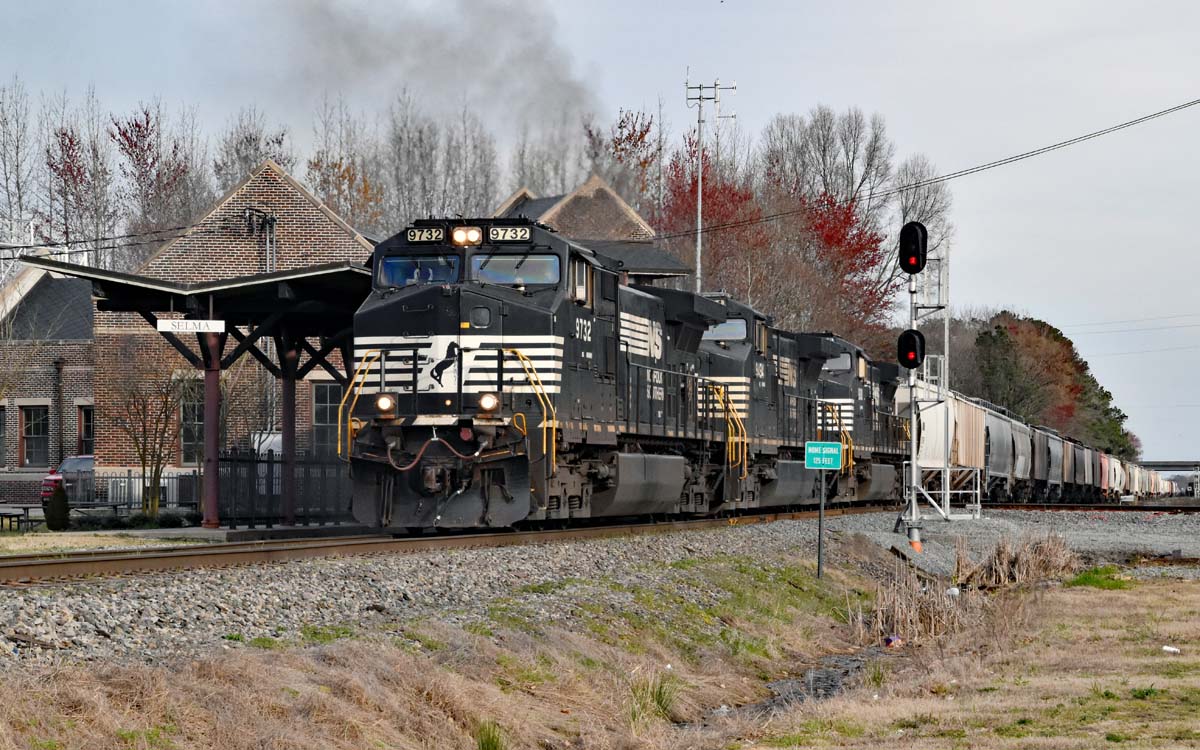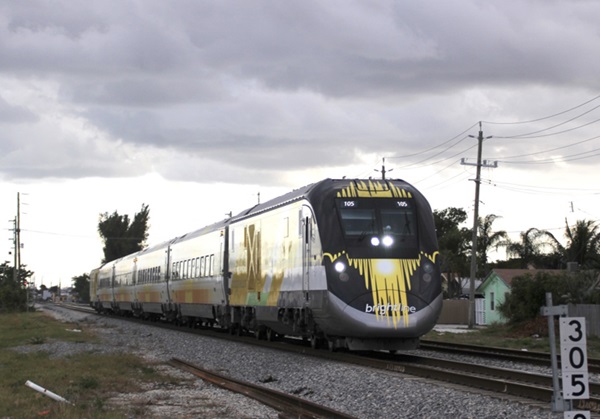The railroad’s operating income fell 2%, to $996 million, as revenue declined 4%, to $2.84 billion. Earnings per share declined 1%, to $2.49, well below Wall Street analyst expectations of $2.62 per share, according to I/B/E/S.
NS reported a record low third quarter operating ratio of 64.9%, a half-point improvement from last year’s third quarter. The railroad will miss its target of a 1-point reduction in the operating ratio this year, partly due to the impact of one-time items, but still expects the key efficiency measure to improve for the year.
NS remains confident it will reach its 60% operating ratio goal for 2021, however, through a combination of cost-cutting, efficiency gains, and revenue growth, CEO Jim Squires told investors and analysts on the railroad’s earnings call.
Overall traffic volume slumped 6% for the quarter, with merchandise down 4%, intermodal down 5%, and coal off by 15%. Revenue per unit climbed in all three business segments as NS continued to raise rates, says Chief Marketing Officer Alan Shaw.
NS said its key operating metrics all improved for the quarter as trains moved faster and spent less time in yards. Average train speed was 16% higher than a year ago, while average terminal dwell improved 32%, says Chief Operating Officer Mike Wheeler.
On-time performance improved to a record level after six straight quarters of improvement, NS said, although executives did not provide specifics.
They also did not provide specifics on various service and productivity metrics beyond saying the railroad was on track to meet targets outlined at its investor day earlier this year.
NS in August began a second phase of operational changes under its TOP21 operating plan, which is based on the principles of Precision Scheduled Railroading. The first phase, which was launched July 1, consolidated trains and increased the use of distributed power.
NS is now rolling out twice as many trains with distributed power and blending more intermodal, bulk, and carload traffic to move tonnage on longer but fewer trains. The number of train starts and recrews per day has declined 11%.
As volume declined in the quarter and operational changes took hold, NS reduced its active locomotive fleet by 22% and its number of train and engine crews by 13% to a new record low for the company.
Overall employment at NS at yearend should total around 23,300 people, a reduction of 3,200 positions compared to the end of 2018, Chief Financial Officer Cindy Earhart says.
At the beginning of the year NS had envisioned job reductions of only 500 positions in 2019.
Wall Street analysts asked why the NS operating ratio has not declined as quickly as CSX Transportation and Union Pacific, both of which have also adopted Precision Scheduled Railroading operating models.
Squires says NS continues to push as hard as it can on costs, efficiency, and revenue growth and is controlling what it can in a declining volume environment.
He also says NS is working on improving its fuel efficiency, which lags the other Class I railroads.















@Alex, newer power is actually less fuel efficient due to Tier 4 emissions compared to Tier 2-3 power. So buying new power won’t help fuel economy it will actually hurt it
Now comes the get rid of our customers because they’re affecting our operating ratio phase of psr. I can guarantee you that a 0% percent operating ratio is possible as long as NS gets rid of all those pesky customers. Why does a railroad even need customers anyway?
…you notice NS never made any specific promises for their PSR operating plan. Nothing like “reduces handlings by X” or “reduces crew starts by Y”…
Jeffrey – The Crescent has been doing a whole lot better the past several weeks. My hunch, based totally on anecdotal evidence, is the merchandise trains on the route have been running much closer to schedule lately.
Volume reduced by 6% . . . Train starts reduced by 11% . . . motive power reduced by 22%. Which implies trains are getting less power and probably operating slower. Guess that will help fuel efficiency.
The bright side must be that “Wall Street analysts” aren’t asking about NS’s performance in handling Amtrak passenger trains. NS has the worst on-time record of the “Big Six” (BNSF, CN, CP, CSX, NS, and UP). Graham Claytor must be rolling in his grave (if you believe that kind of stuff).
A key phrase in the article is, “Wall Street analysts asked…” no doubt railroaders one and all.
NS has high fuel consumption because of the routes they have and the power they have to apply to make schedules. Good fuel economy is nice, but not an “end” in itself.
The PSR operating plan for merchandise traffic was rolled out at the beginning of third quarter. Results were pretty blah. Why? NS has maintained a pretty efficient operating plan since the original TOP. There just wasn’t much “there” there.
Note the comments from Wall Street- OR is all they care about even if a majority if them have no idea what it actually means. Wall Street analysts are simply bleating sheep.
Interesting note about fuel efficiency. A longtime strategy of NS have been rebuilds, and they have a lower share of latest-gen power than just about anybody else. Consider that to be anything on the GEVO/SD70M-2/SD70ACe platform.
So it’s a good question to ask: is it better to have lower costs into the power itself, at the expense of fuel economy or not? I could certainly see them aiming for higher fuel efficiency if oil prices are climbing quite a bit, but they’ve been right in the middle of the $2 range for years now. So that leads me to believe that they’re starting to perhaps think about longer-term fuel savings, versus those from rebuilding older generation power.